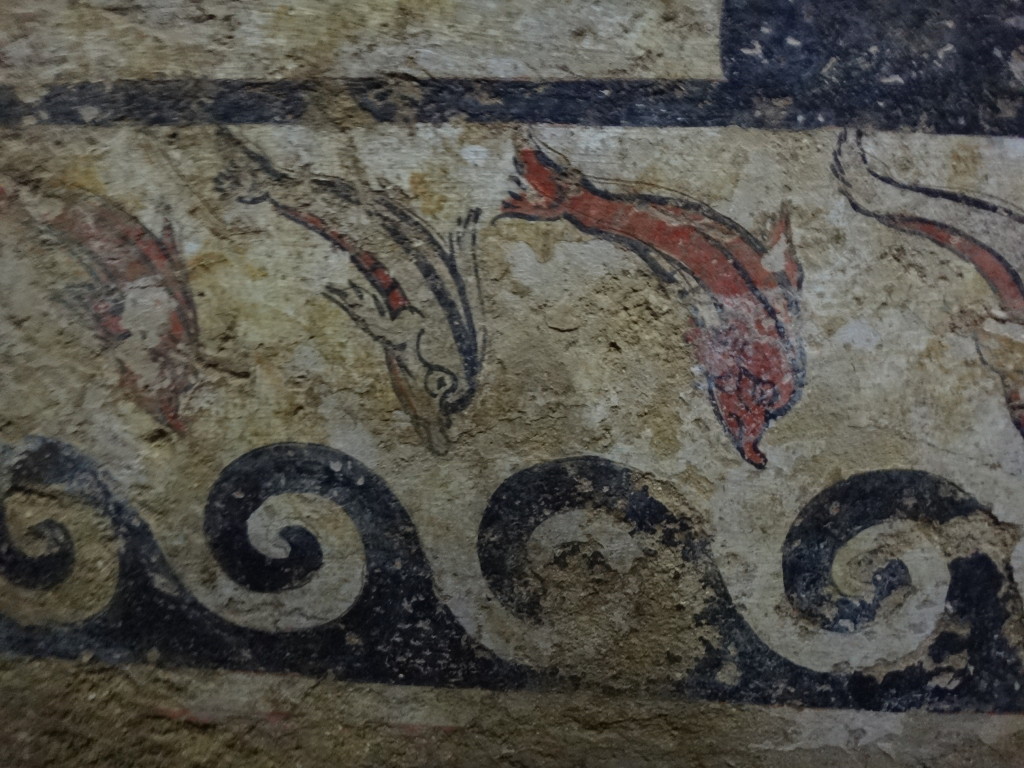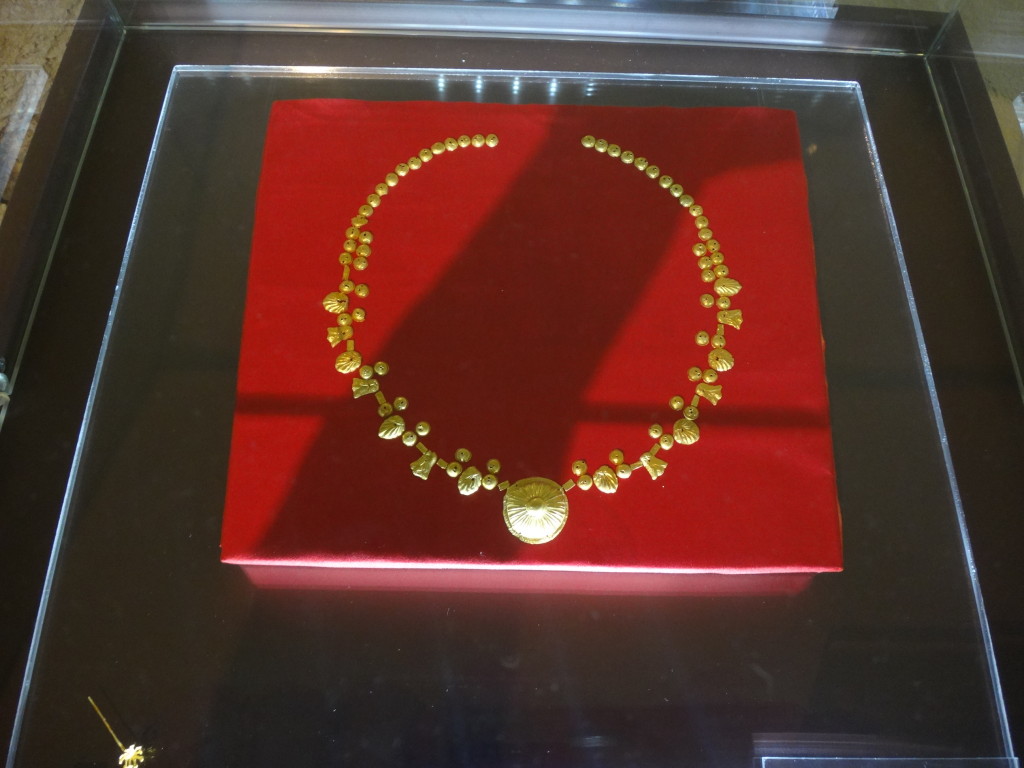Imagine you are a shepherd at the time of Christ’s birth. You graze your sheep on a tall hillside overlooking a steep valley, lushly green and deeply forested. A violent storm comes up with heavy winds and pounding rains that nearly knock you over. You gather your flock and ride the storm out in the nearest cave. In the morning when you wake and a little light filters into the cave, the first thing you see is Charon, the demon from hell staring at you from the other side of the tiny cave!
Shepherds made their home in the tomb of the quadriga infernale for centuries. They dug a little more deeply into the side of the cave but never disturbed the art created by the Etruscans centuries before. It was the the 19th and 20th century tomb raiders who chiseled into the ancient art to make a wider opening to the cave, destroying part of the paintings in their haste to find treasure.
An archaeologist led five visitors, including me, through a deep field to the Tomb of the Quadriga Infernale. He spoke no English but we were fortunate that an Australian woman was on the tour who was fluent in both English and Italian. As the archaeologist explained the tomb, she quickly translated for us. She was a goddess, quickly translating while nursing her baby as her toddler son ran circles around our legs.
We walked past several small Etruscan tomb openings that were long ago raided and are no longer studied. The openings were so tiny, I knew I never would have made it down the stairs let alone into the small passages.

When we entered the travertine tomb of the Quadriga Infernale (the chariot from hell), we were careful of the rugged dirt floor and I told myself to fall to the right AWAY from the cave paintings if I were to trip. My plan was to fall right onto the muddy floor that was once the home of a shepherd.
The cave was only 15 feet below the ground but we had entered a world of demons and myth. This tomb is exceptional because nothing exists in discovered Etruscan history with this version of the underworld. The demon Charon drives a chariot powered by two griffins and two lions. According to the museum, the demon has a “fearful, surly, possessed look.” This demon has never been seen driving a chariot except in this tomb.






Before visiting the tomb, we toured the Museo Civico Archeologico di Sarteano in Sarteano, Italy. The beautiful little gem of a museum is perfectly curated with clean glass cases of Etruscan artifacts. It also includes a replica of the tomb of the Quadriga Infernale that is a fine depiction of the cave we visited.

The Australian who translated for us noted, “Only in Italy could we walk into an ancient treasure.”
The “quadriga infernale” cave was rediscovered in October 2003 and is now open upon reservation only on Saturdays at 11:30 am in winter and at 9:30 am and 6:30 pm in summer. You can make reservations by calling 0578.269.261 or email museo@comune.sarteano.si.it.


